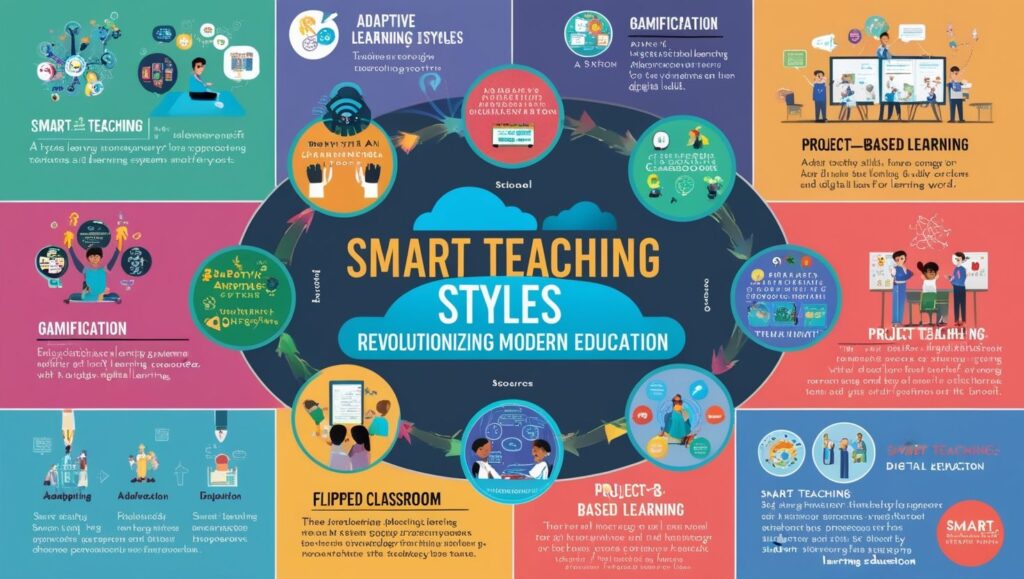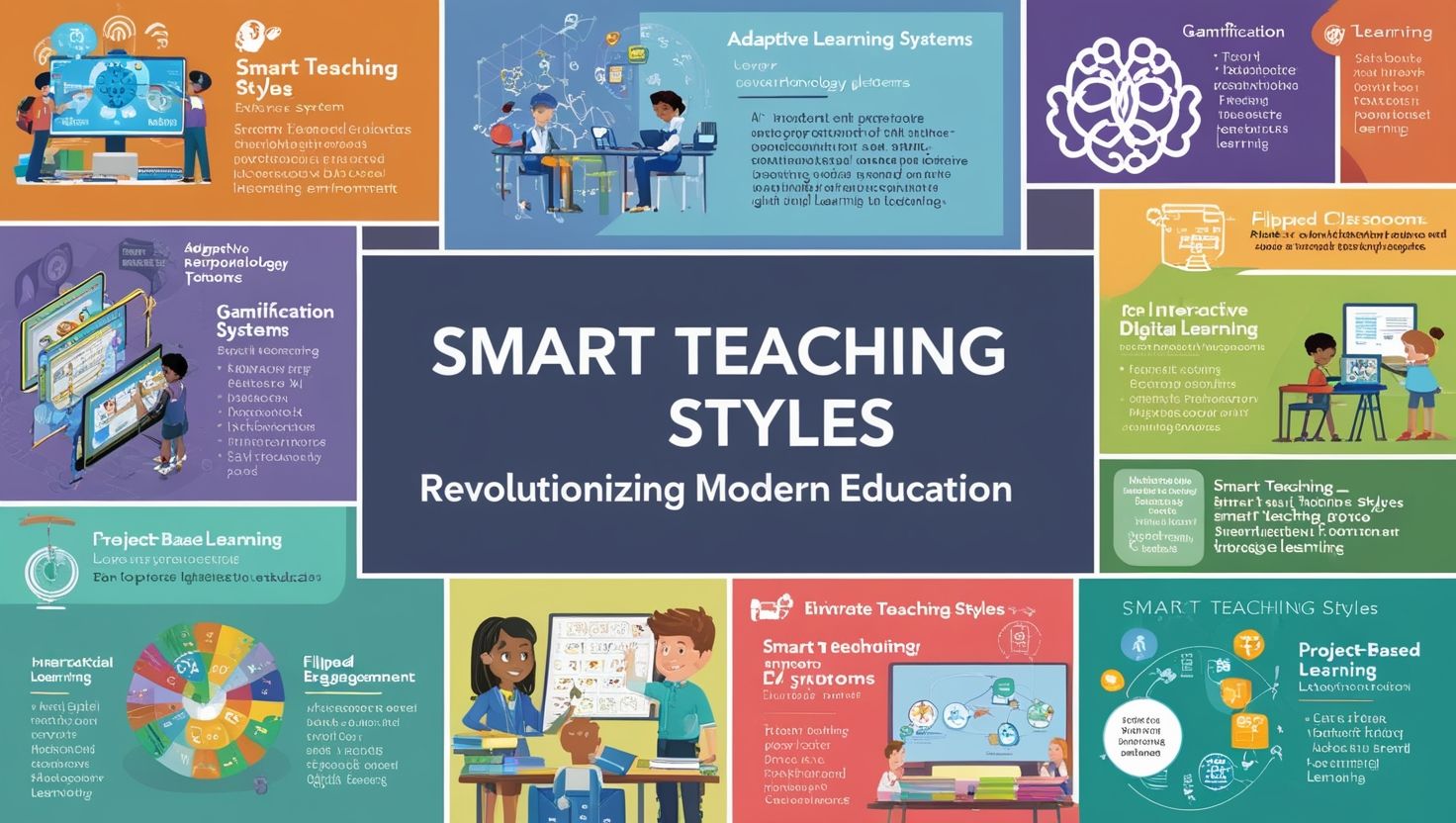Introduction
Smart Teaching Styles, The field of education has been transformed in recent decades by the integration of technology, fostering new “smart” teaching styles. These styles prioritize adaptability, interactivity, and personalized learning, aiming to engage students in more meaningful ways. This article explores the most effective smart teaching styles, their application in classrooms, and their impact on students’ learning experiences.
1. Understanding Smart Teaching Styles
Smart teaching styles use advanced technology and innovative strategies to enhance student engagement and learning outcomes. Unlike traditional methods, which rely heavily on direct instruction, smart teaching encourages collaboration, critical thinking, and active learning. This shift is especially relevant as students today are digital natives, making tech-friendly approaches more suitable and intuitive for modern classrooms.
Key Characteristics of Smart Teaching:
- Emphasis on student-centered learning over rote memorization.
- Use of interactive tools like tablets, smartboards, and learning apps.
- Data-driven personalization of teaching, based on individual student performance.
- Incorporation of gamification and project-based learning to boost engagement.
2. Adaptive Learning Technologies
One of the most significant advancements in smart teaching is adaptive learning technology, which tailors educational content to the individual needs of each student. Adaptive systems use algorithms to analyze student data and adjust the level of difficulty or type of content based on student performance, which can be especially beneficial in mixed-ability classrooms.
Benefits:
- Provides a customized learning experience, which can be more effective than one-size-fits-all approaches.
- Helps identify areas where students struggle, offering real-time feedback and additional resources.
- Encourages self-paced learning, allowing students to progress at their own speed.
Example in Action:
Platforms like DreamBox Learning and Knewton have implemented adaptive learning for K-12 students, significantly improving engagement and comprehension in subjects like math and science.
3. Gamification and Game-Based Learning
Gamification involves integrating game elements—such as rewards, leaderboards, and badges—into learning environments to motivate students. Game-based learning, on the other hand, uses actual games designed for educational purposes to teach specific skills or content areas.
Benefits:
- Increases student engagement through a fun, interactive approach to learning.
- Builds essential skills, such as teamwork, problem-solving, and strategic thinking.
- Provides an environment where students can learn from mistakes in a low-stakes setting.
Example in Action:
Educational games like Kahoot! and Minecraft: Education Edition are used widely to make subjects like history, math, and science more relatable and enjoyable for students.

4. Flipped Classroom Model
In a flipped classroom, traditional teaching methods are reversed. Students first learn new content at home through videos, readings, or interactive modules, and then apply that knowledge in the classroom through hands-on activities, discussions, and collaborative projects. This model allows teachers to focus on addressing questions and facilitating deeper learning in class.
Benefits:
- Encourages active learning and enhances comprehension, as students are better prepared for in-depth discussions.
- Allows for more one-on-one time between teachers and students, as class time is used for interactive exercises rather than lectures.
- Supports diverse learning styles, accommodating visual, auditory, and kinesthetic learners.
Example in Action:
Many schools have adopted Edpuzzle or Google Classroom to facilitate the flipped model, with research showing positive outcomes in student performance and engagement.
5. Project-Based and Problem-Based Learning (PBL)
Project-Based Learning (PBL) and Problem-Based Learning both emphasize learning through real-world applications and problem-solving. In PBL, students work on a project over an extended period, which involves research, planning, and presentation. Problem-Based Learning encourages students to solve specific, real-life problems, promoting critical thinking and teamwork.
Benefits:
- Encourages deeper understanding of subject matter through experiential learning.
- Develops important soft skills, such as communication, collaboration, and resilience.
- Engages students by connecting learning with real-world applications.
Example in Action:
Programs like Project Lead the Way provide resources and frameworks for PBL across STEM subjects, helping students gain hands-on experience in areas like engineering, computer science, and biomedical sciences.
6. Collaborative and Social Learning Platforms
Collaboration is essential in modern workspaces, and smart teaching styles emphasize the importance of teamwork early on. Digital tools, such as online discussion boards, collaborative document platforms, and virtual classrooms, allow students to work together on projects, even if they are not physically present.
Benefits:
- Enhances peer-to-peer interaction, building social and emotional skills.
- Provides a supportive learning environment where students can learn from one another.
- Promotes a sense of community, which can be beneficial in online or hybrid learning models.
Example in Action:
Platforms like Padlet, Microsoft Teams, and Zoom have become invaluable in facilitating group work and interactive learning sessions, especially during the rise of remote and hybrid education.

7. The Role of Artificial Intelligence (AI) in Smart Teaching
AI has the potential to further revolutionize smart teaching by automating administrative tasks, providing virtual tutoring, and analyzing large sets of student data to improve instructional methods. AI-powered tools, such as virtual teaching assistants or automated grading systems, allow educators to spend more time on instruction and student engagement.
Benefits:
- Reduces teacher workload by automating repetitive tasks, such as grading and scheduling.
- Helps identify at-risk students through predictive analytics, allowing for early intervention.
- Supports personalized learning with chatbots or virtual assistants that guide students in real-time.
Example in Action:
AI-driven tools like Gradescope assist teachers with grading and feedback, while apps like Quizlet offer AI-guided study sessions based on individual learning patterns.
8. Challenges of Smart Teaching Styles
Despite their many advantages, smart teaching styles are not without challenges. Teachers need adequate training to use these technologies effectively, and schools may face budgetary constraints in adopting new tools. Additionally, some students may lack access to devices and high-speed internet, leading to a digital divide.
Key Challenges:
- Teacher Training: Teachers need continuous professional development to adapt to new tools and methodologies.
- Budget Limitations: Smart teaching tools can be costly, and not all schools have the resources to implement them.
- Digital Equity: Not all students have access to the necessary devices or reliable internet at home, which can hinder the effectiveness of smart teaching styles.
9. Conclusion
Smart teaching styles are reshaping education by making learning more interactive, personalized, and engaging. While challenges like budget limitations and the digital divide remain, the benefits of these approaches—such as fostering critical thinking, improving engagement, and supporting diverse learning needs—make them valuable additions to modern classrooms. As technology continues to advance, smart teaching styles will likely become an even more integral part of education, preparing students with the skills and knowledge they need for the future.
References
- Johnson, L., Adams Becker, S., Estrada, V., & Freeman, A. (2014). NMC Horizon Report: 2014 K-12 Edition. Austin, Texas: The New Media Consortium.
- Anderson, T. (2008). The Theory and Practice of Online Learning. Athabasca University Press.
- Blaschke, L. M. (2012). Heutagogy and lifelong learning: A review of heutagogical practice and self-determined learning. The International Review of Research in Open and Distributed Learning, 13(1), 56–71.
- Felder, R. M., & Brent, R. (2005). Understanding Student Differences. Journal of Engineering Education, 94(1), 57–72.

6 thoughts on “Smart Teaching Styles”
Comments are closed.